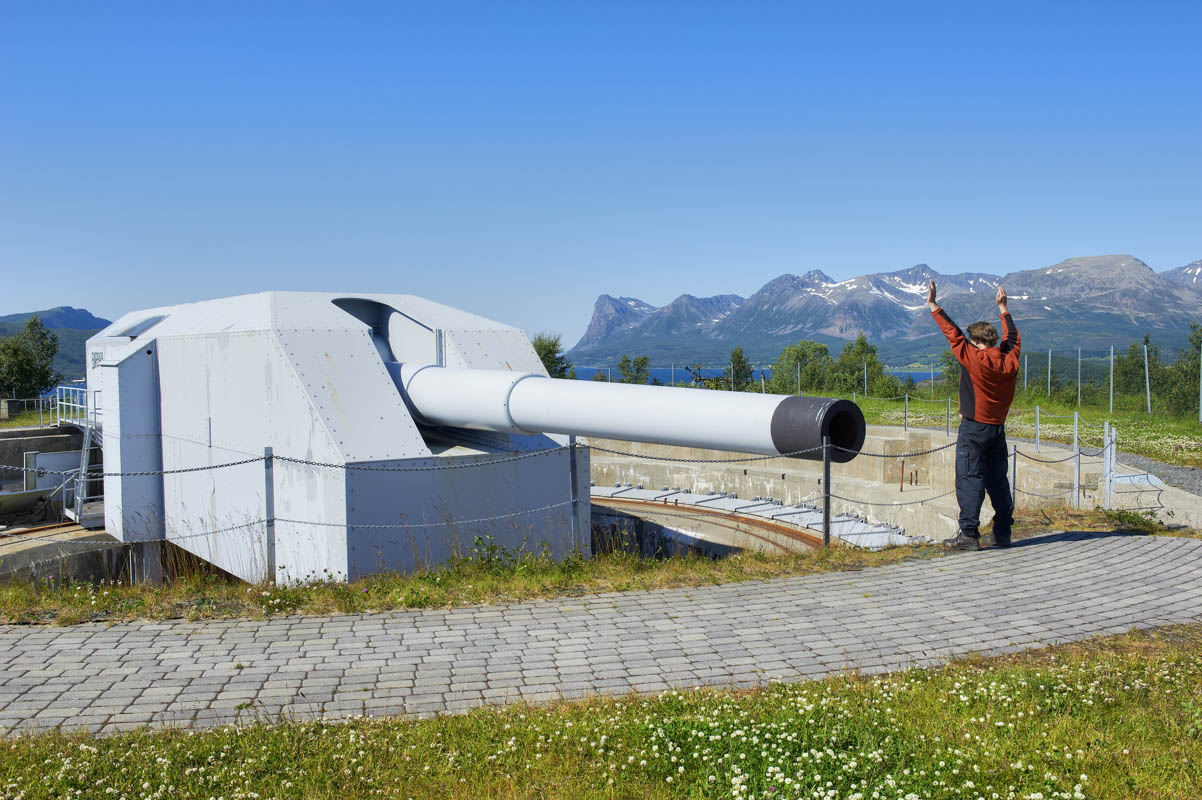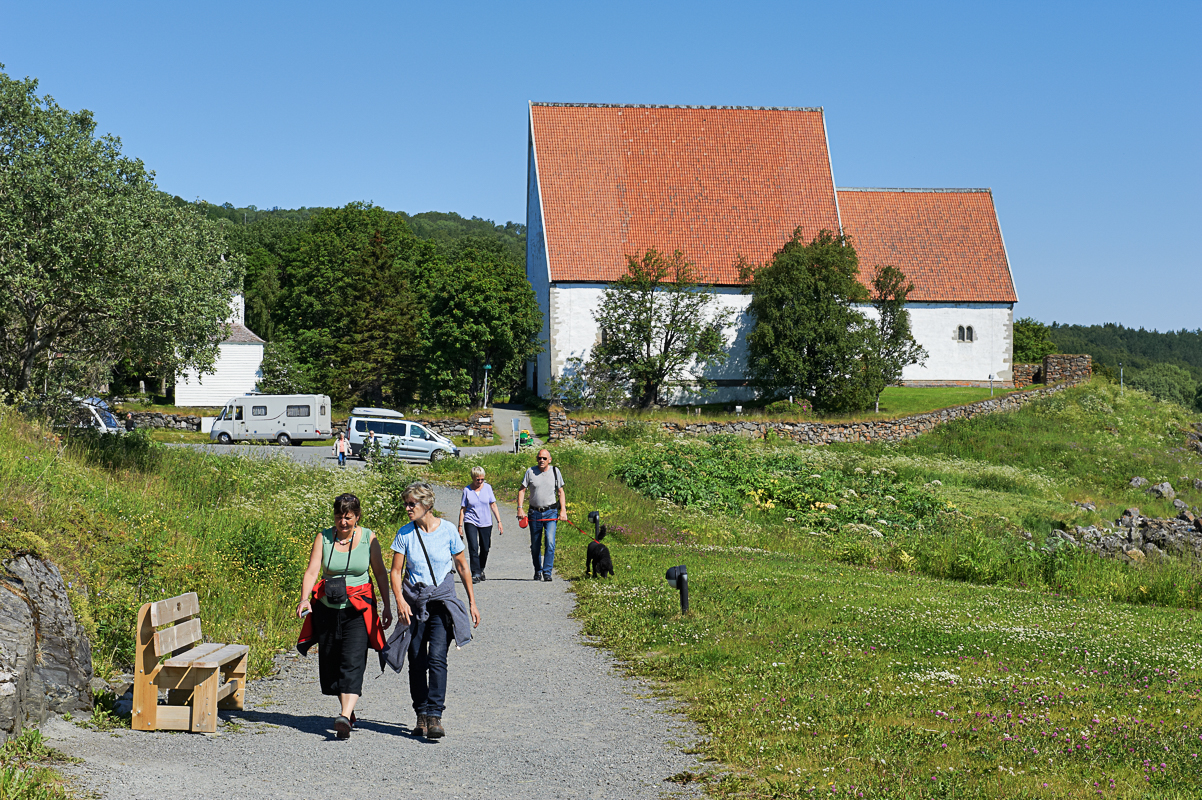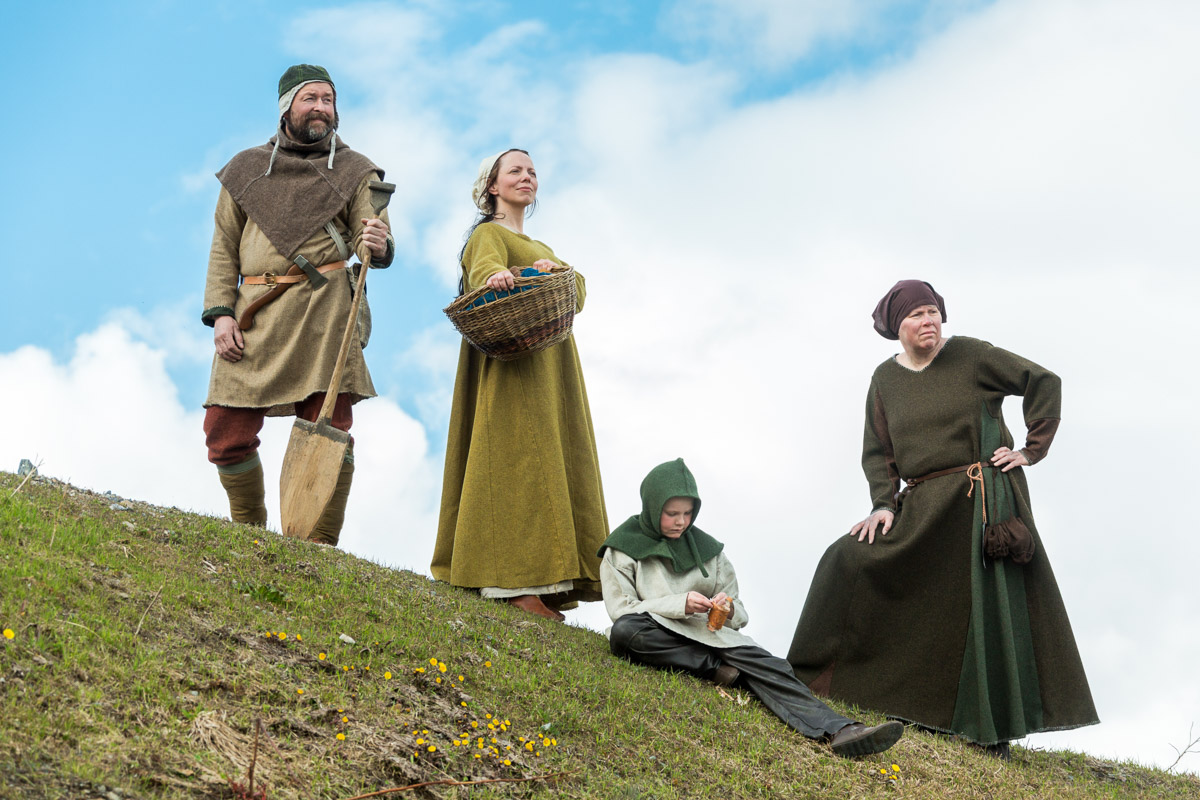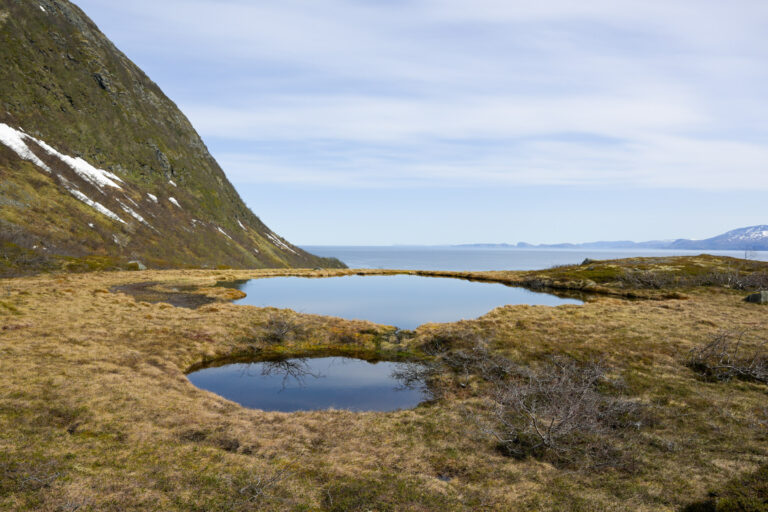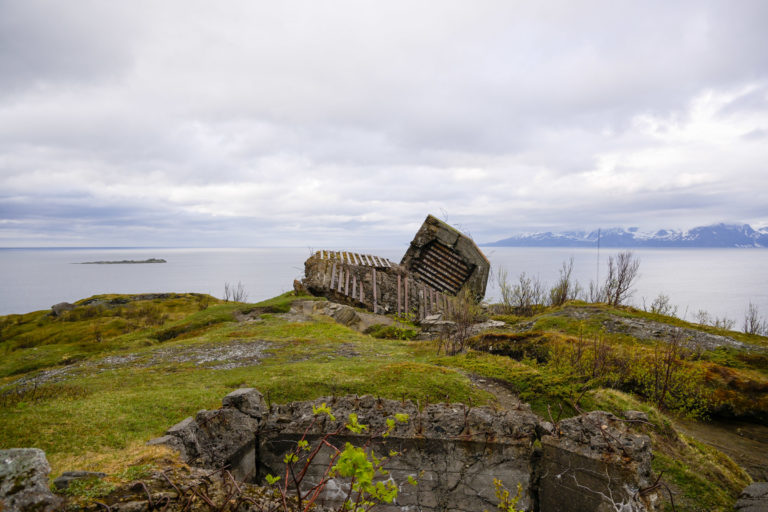It’s best to walk the historical trail on Trondenes after visiting the Trondenes Historical Centre. This is because the centre provides a background to the historical elements that you will see on the trail, which date from the Second World War and the Viking Age. Trondenes Church and the Adolf Gun are also in this area and are taken in by the hiking trail on Trondenes.
Russian prisoner of war camp on Trondenes
In 1942, work began on the construction of Trondenes Fortress and its gigantic Adolf Gun, which was intended to secure the northern sea approach to Narvik. The heavy labour was done by captured Soviet soldiers, in complete contravention of international law. Flimsy plywood huts were built for these prisoners in 1943, and they were put to work under the most horrendous conditions.
Information about the fort at Trondenes
The historical centre, and the medival farm of Trondenes are nearby. You should also visit the Adolf gun if you are interested in world war 2 history.
The war prisoner camp, a camp called “The Finnmark Camp”, and sights from the viking era are represented. It is a marked trail, but we reccomend going to the tourist office first and have them
It is a nice walking path starting from the town centre in Harstad. You may also take the bus, ask the tourist information about which one to use.
It is a cafe that are open during the summer at Trondenes historical center. The rest of the year you may buy coffee, but, you may enjoy a packed lunch bag if you bring one.
He was brought here to die
We found out the fate of these prisoners from one of them, Konstantin Seredintsev. He came to Trondenes in February 1943, and died three months later of poor general health and circulation failure, undoubtedly as a result of the hard labour and lack of food. However, his diary survived the war, and his descriptions of the conditions are one of the most important sources of information, helping us to understand what happened in the prison camp on Trondenes. At the sight of the dirty, cold and cramped huts, he writes ‘now it is clear to me that we have been brought here to die’. An exhibition in the Trondenes Historical Centre presents him and the camp in more detail.
Graveyard
Just outside the graveyard wall, north of Trondenes Church, is a monument to those who died. A classic Soviet monument built of red stone commemorates the 800 men who lost their lives, and the South Troms Museum documents 413 of them. This monument was erected in the graveyard that was created for the bodies when the camp was operational. In 1952, all of the war graves in Northern Norway were brought together to one place, Tjøtta on Helgeland. This decision was met with fierce resistance in Harstad, but it was the height of the Cold War: people did not trust the Soviets who came to visit the numerous war graves in Northern Norway, believing them to be spies.
Through the prison camp
When the prison camp was burned down and the graves moved, the area was colonised by willow trees. Now those trees have been removed, and a path runs through the remains of the camp, though there is not much left to see of it. The foundations of the watchtower are still there, and you can just make out the outline of the small huts. It seems almost incomprehensible that there was room in each hut for 120 men, 60 on the day shift and 60 on the night shift, and you can’t even begin to understand the scale of their suffering. Amongst the undergrowth in the innermost part of the area is the ‘Russian Church’, a roofless, overgrown stone building that was unlikely to have been a church, and was probably an ammunition store.
Finnmark Camp
Between 1944 and 1945, 50,000 people were forcibly evacuated from Finnmark and North Troms. Since the destruction in much of the area was total, these people could not go home as soon as the war ended. So the German huts used by engineering groups such as Organisation Todt during the construction of the Adolf Gun were then used as temporary accommodation for the evacuees. These huts are also gone, so you can just see the outline of some of them on the ground. Although the occupants lived there in conditions that for us would be wretched, these huts were far more comfortable than those housing Russian prisoners during the war.
Laugen is a small bird reservoir
The path leads past a small lake, Laugen, surrounded by rushes and marsh plants. There are many different kinds of ducks and wading birds here, some of the more unusual being horned grebes and common scoters. The undergrowth is also teeming with songbirds and other small birds.
The Vikings in Altevågen
A short onward hike takes you to Altevågen, on the west side of the Trondenes peninsula. Here you can see the outlines of where two boathouses once stood. The biggest site is 30 metres long, and is believed to have housed a sizeable Viking ship. The most likely owner of this ship was Asbjørn Selsbane, a prominent Viking killed by Olav the Holy’s men in 1024. In accordance with the Vikings’ code of honour, Olav the Holy was then killed by Tore Hund at the battle of Stiklestad in 1030. All this tells us that the site of the grand house on Trondenes was a political hotspot in the 11th century.
The walk-on Trondenes is a well-marked trail
A well-marked trail runs through the area, with a good surface that is suitable for wheelchair users. Information boards tell you more about everything you can see. The Trondenes Historical Centre, medieval Trondenes Church, and the huge Adolf Gun are in the area. You can walk along a marked trail from Harstad town centre, visit the attractions, stroll along the historic route and enjoy some light refreshments at the cafe at the Trondenes Historical Centre. This cafe is open during the school holidays, but at other times you are welcome to take a packed lunch and buy a cup of coffee there. The landscape here is extremely well preserved, with groves of trees, meadows, and buildings from various different eras. About 200 different species of flowers and ferns grow in this area, and some of them are quite rare this far north. The vegetation is kept short by grazing short-tailed sheep and Nordland cattle, which is their contribution to caring for this landscape.
